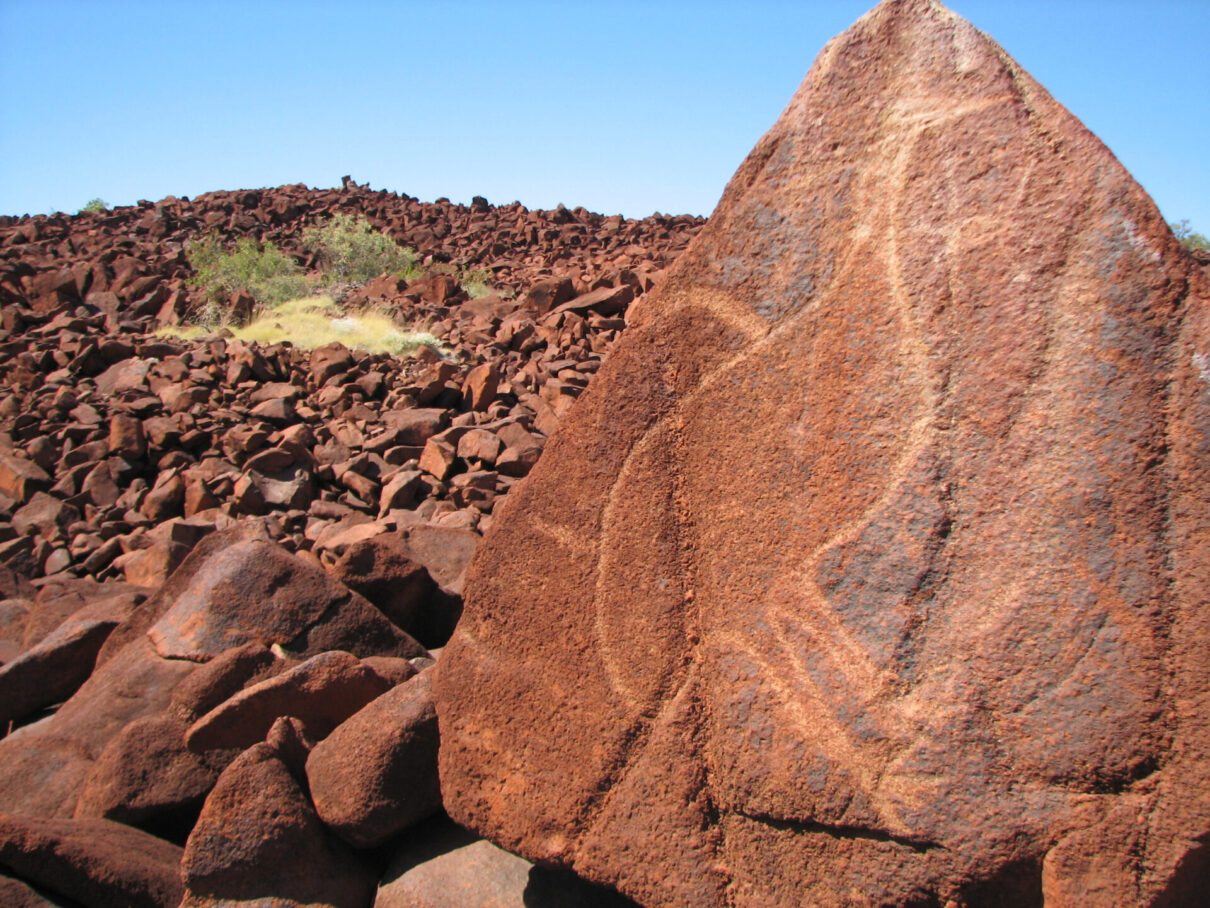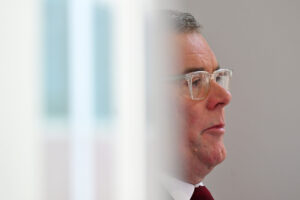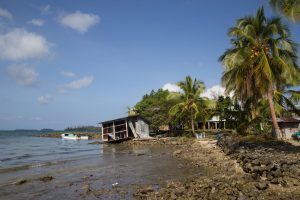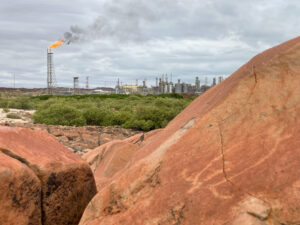A veil of secrecy hangs over the conditions that will apply to Woodside Energy’s massive gas export project on the Burrup Peninsula in WA – the kind of secrecy that corporate power can command.
In May, Environment Minister Murray Watt gave provisional approval to a 45-year extension of the oil and gas giant’s liquid natural gas export hub on the Burrup and an associated gas power plant.
This was controversial, and not just because the project is a carbon bomb that will create a huge volume of greenhouse gas emissions.
Woodside’s gas facilities are also adjacent to what many experts consider the most significant Indigenous rock art site in the world: The Murujuga Cultural Landscape.
It contains a huge concentration of images, known as petroglyphs, etched into the rocks. Some date back up to 50,000 years, depicting ancient megafauna and the oldest known image of a human face.
Murujuga has just been listed on UNESCO’s World Heritage Register. But don’t assume that means it is safe.
The trouble is that burning gas releases pollutants that can damage the rock art.
When Watt announced the provisional go-ahead for Woodside’s gas extension, he said he would put “strict conditions” on the project to protect the petroglyphs. He refused to disclose what those conditions were.
Supposedly, the secrecy was about giving Woodside Energy “procedural fairness”.
Woodside was given 10 days to respond but failed to meet the deadline. Watt, it seems, has been happy to give it an indefinite extension.
Weeks have gone by and the public is none the wiser. Watt has dismissed calls by the Australia Institute and other non-government organisations to release the terms of the draft approval or details of the conditions he sought.
It’s hard not to conclude that Big Gas is being allowed to negotiate behind closed doors on the “strict conditions”. It’s easy to fear that the conditions will be watered down.
In any case, the Minister seems blasé about the potential threat posed by the gas development. He has seized on the findings of a monitoring report, commissioned by the Western Australian government, which at first blush seems to counter concerns about Woodside’s toll on the rock art. But the report doesn’t stand up to scrutiny.
Sadly, it found damage to rock containing the art over an extensive area near where industry is located. Tiny holes pit the surfaces of the rocks, compromising a natural varnish that forms over thousands of years and protects the petroglyphs. This may accelerate their destruction.
The study attributes this damage to “historic emissions” dating back to the 1970s from an old, defunct power plant at Dampier. But data in the report itself contradicts this claim.
Compared to that old power station, current industry produces roughly double to quadruple the volume of the key industrial pollutant known to damage the rock art. What’s more, aside from the old power station, there was little other industry in the region that could have been responsible for “historic emissions”. Only iron ore exports, and the volume of exports was very low.
So, like the surfaces of petroglyphs compromised by pollution, the report that blames historic emissions and exempts Woodside is full of holes. But it has proved useful for the federal and state governments.
Just before Watt gave Woodside the provisional green light, a panel of eminent experts advising UNESCO recommended that the Australian government address issues before the Murujuga rock art was added to the World Heritage list.
It said that Australia should “ensure the total removal of degrading acidic emissions currently impacting upon the petroglyphs” and “prevent any further industrial development adjacent to or within the Murujuga Cultural Landscape.”
It also recommended removing existing industry and remediating “as required”.
All highly inconvenient for a government wanting to green-light Woodside’s decades-long extension of gas processing at Murujuga.
Through intense lobbying ahead of the UNESCO meeting in Paris – brandishing that flawed report – the Minister and his entourage succeeded in having these conditions overturned.
Despite this, Australia has a formal obligation to protect the World Heritage site. Physics and chemistry are impervious to political chicanery. If emissions degrade the rock art, an extraordinary cultural heritage produced over tens of thousands of years could be lost within decades.
Gas and chemical industries loom over Murujuga, their noise and visual impact impinging on the unique landscape. The tragedy is the industry doesn’t need to be there.
There is no gas at Murujuga; Woodside Energy intends to pipe it in from offshore fields hundreds of kilometres away to process it adjacent to the rock art. It’s not too late to say no.
Failing that, the Minister could require that the gas giant stop all acid emissions. He could make public the conditions he seeks to impose that Woodside seems unwilling to cop. If it was all out in the open, it might be harder for the gas giant to bring the government to heel.
Between the Lines Newsletter
The biggest stories and the best analysis from the team at the Australia Institute, delivered to your inbox every fortnight.
You might also like
Yes, Minister. The secret haggling behind the destruction of an ancient treasure.
It tells you a lot about who wields power in Australia that Woodside is being allowed to haggle in secret over the conditions of the North West Shelf expansion
Our crisis of integrity looms in the Pacific
“An Albanese Labor government will restore Australia’s climate leadership, and listen and act on Pacific island warnings of the existential threat of climate change.” Despite a clear election campaign commitment to listen to Pacific Island nations and act on climate change, the Australian government continues to enable and encourage new and expanded fossil fuel projects. When it
What is the government doing to protect the World Heritage-listed Murujuga rock art?
The ancient Indigenous rock art on Western Australia’s Burrup Peninsula has been deservedly listed on the UNESCO World Heritage Register.




